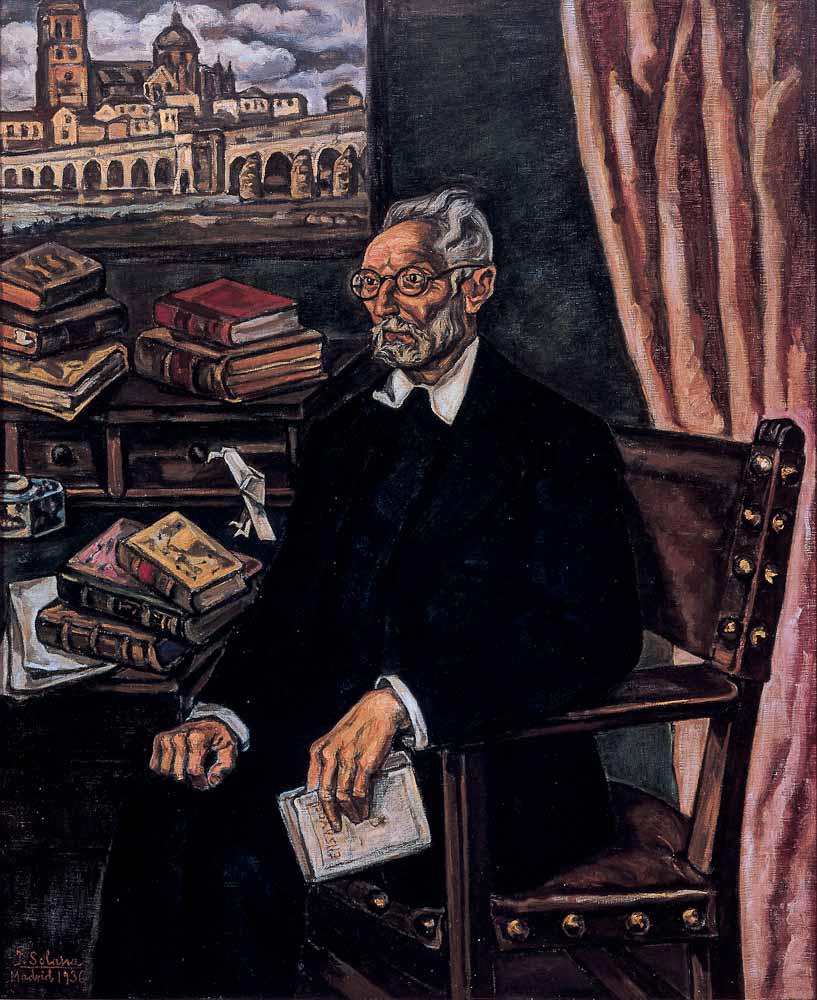
José Gutiérrez Solana (Madrid, 1886-1945)
Don Miguel de Unamuno
1935-1936
WORK INFORMATION
Oil on canvas, 140 x 118 cm
OTHER INFORMATION
Signed at the lower left corner “J. Solana / Madrid 1936”
Solana embarked on this portrait of Miguel de Unamuno in 1935 as a commission for the Ministry of Public Instruction, possibly on the request of Unamuno himself given that two years before that date the latter had expressed his admiration for Solana when writing to Victor Macho: “What I would venture to predict is that the portrait that Solana will paint of me will be at least as authentic as the interior image that I have of myself. I have paused before paintings by Solana, entered into them and felt myself to be a part of them through experiencing my Spanish fraternity with Solana’s Spanish soul. The soul of the Spain that he, I and others are rebuilding.”
The artist, however, would not paint Unamuno’s portrait until some time later, as Ramón Goméz de la Serna recorded: “He was painting the portrait of Don Miguel Unamuno, who was as bad tempered as ever, months before Spain’s tragic hour. Unamuno transcribed a comment of Solana’s on the commission, which once again conveys the artist’s commitment to realism. “[…] Don Miguel must be painted with his hair messy […]. One day he arrived very neat and tidy from the barber’s and I said ‘That’s just not you’. And that afternoon I didn’t paint a single stroke.”
Apart from the Portrait of Valentín Ruiz Senen, this is Solana’s only commissioned portrait, for which he was awarded the National Painting Prize in 1936. Undoubtedly happy with the results and on the request of his family, he painted two more versions of it that he gave to his two brothers. They differ only in small aspects of the composition. Among the notable elements in the present version, which belonged to Miguel Gutiérrez Solana, are the painting in the background of a landscape in Salamanca and the book that Unamuno holds entitled Essays, the title of which does not appear in the other two versions. In addition, the chromatic range in this version is livelier and more harmonious.
María José Salazar
